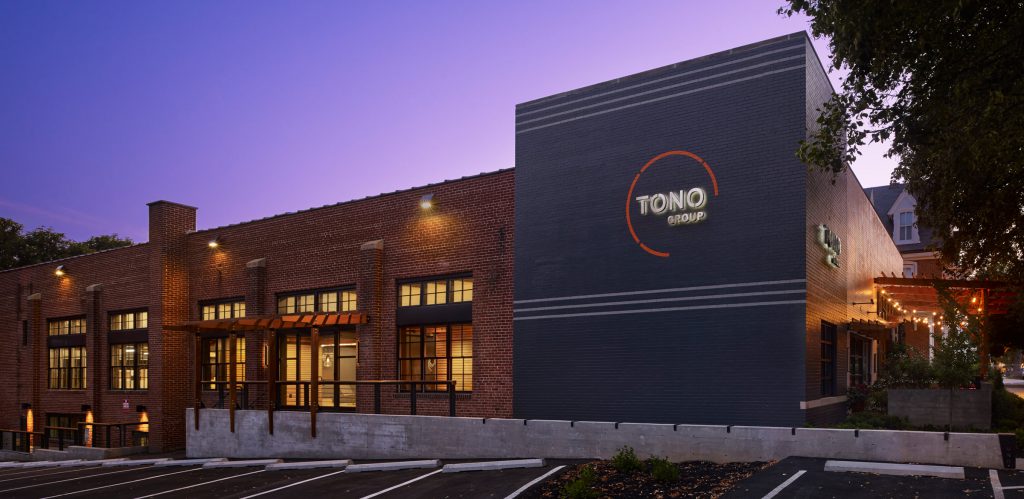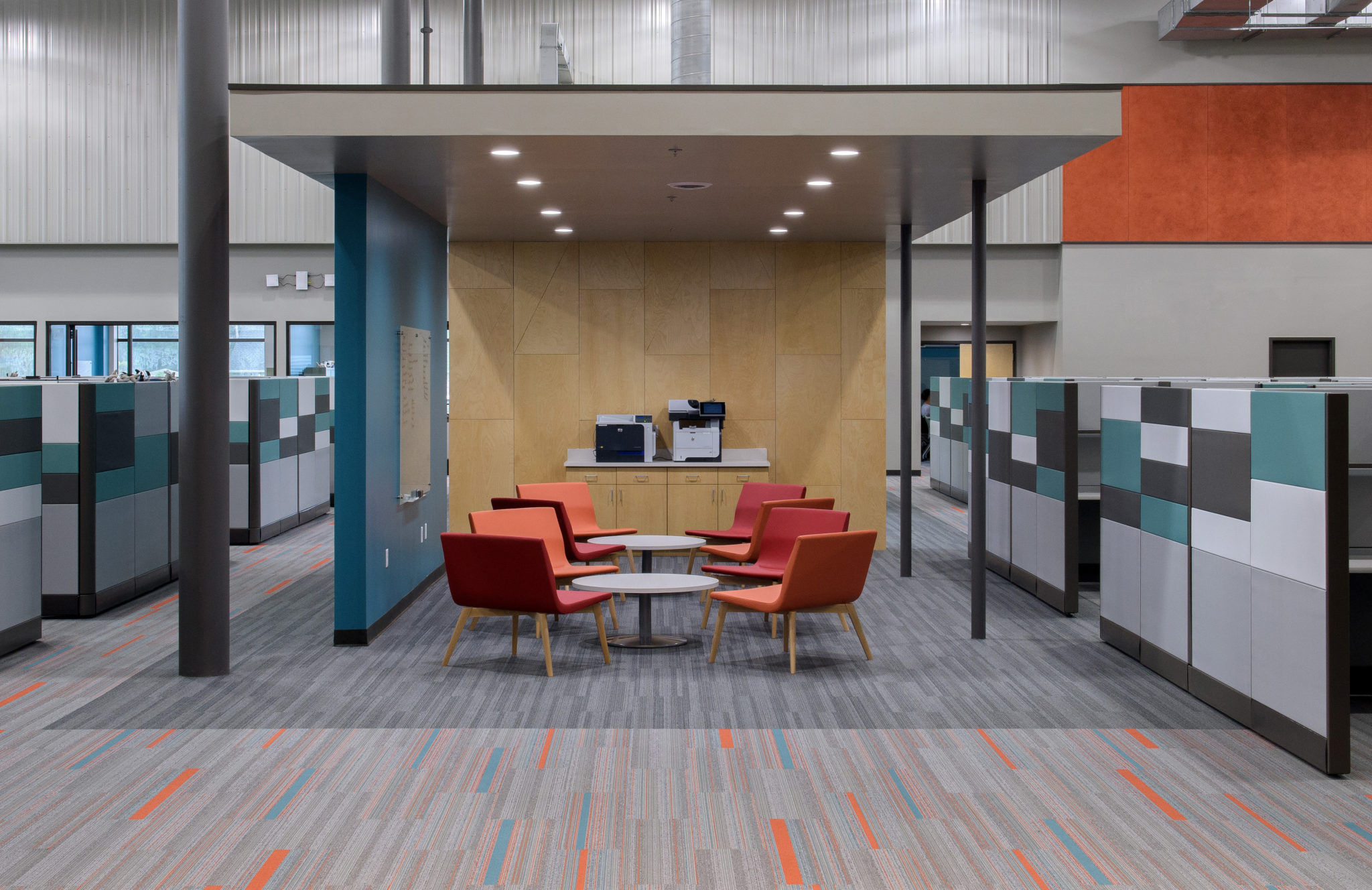
AN ARCHITECT’S FEE: WHAT’S THE VALUE AND HOW DOES THE BILLING PROCESS WORK?
What You’re Paying For
“How much does it cost for a set of blueprints?”
It’s the question every architect dreads to hear from a prospective client. Why? Because it’s the wrong question to be asking. Like any other service-based profession, architecture involves taking a complex task (in this instance, designing and constructing a building) and guiding a customer through completion of that task. The value of our services lies in providing a desirable solution to a complicated problem.

For the same reasons a surgeon gets paid for her experience and skill while performing a heart transplant, and a lawyer gets paid for his expertise in reviewing and negotiating corporate contracts, an architect is paid to thoughtfully design functional, safe, and aesthetically pleasing spaces.
In each of these cases, you as a client aren’t paying for a single item or product. Your architect doesn’t hand you a set of blueprints, cash a check, and move onto the next customer. Instead, you’re paying for the architect’s time, experience, expansive industry knowledge, guidance, and creative thinking capabilities during the complicated process of design, documentation, and construction. All of these things factor into an architect’s fee.
Cost Vs. Value of An Architect
This leads to another point of clarification: the initial cost of something is not the same as its lifetime value.
As an everyday example, let’s say you buy a cheap pair of $5 sunglasses. You wear them for a couple weeks before one of the lenses falls out and cracks. Now you’re left with the same problem you had two weeks ago: no sunglasses and no relief from the glaring sunlight.
A more expensive $50 pair may have lasted years before succumbing to regular wear and tear, saving you the trouble of buying a new pair every other week, all while providing better protection for your eyes.
The first $5 pair was cheap, but also worse quality. They were more costly to you in terms of time and convenience. So which pair was really the better deal?
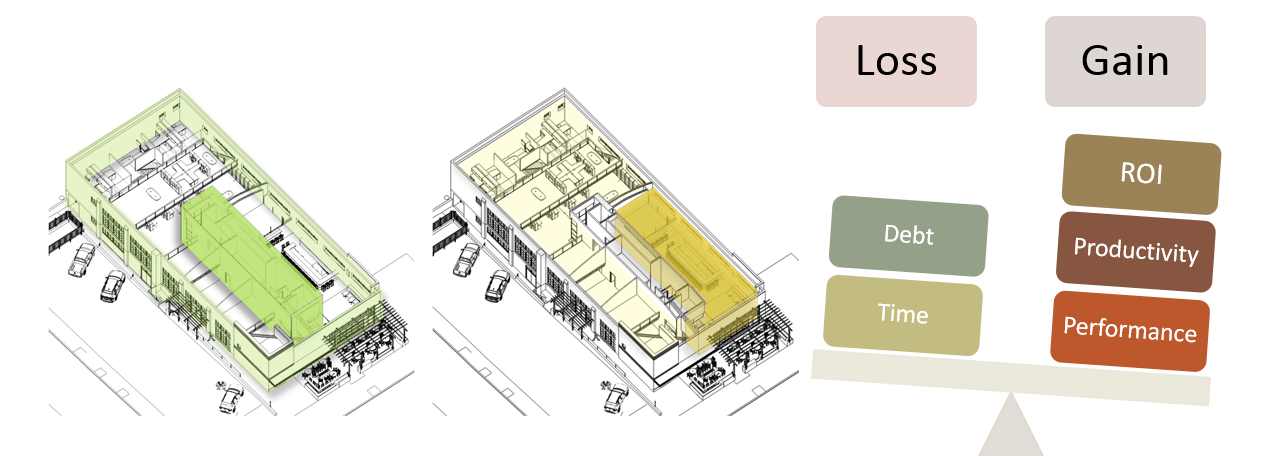
We can apply this same logic to an architecture example. Let’s say you’re a retail developer and you need more parking for your clientele. As a design professional, your architect can design an efficient parking garage to accommodate more vehicles in your space than you originally asked for. This solution may result in higher initial expenses, but the long-term value of more parking means room for more shoppers and consequently, a potential for increased revenue.
In other instances, more natural light in your space could mean more productive employees or higher re-sale value. Creative layout solutions could mean greater flexibility, allowing you to stay in your office while your business grows, rather than dealing with relocation or renovation expenses time and time again. Thoughtful design solutions like these add value over time, value you may not have realized with a cheaper and poorer quality alternative.
When considering possible solutions to a problem, initial cost should always be considered in conjunction with lifetime value.

How Do You Get Charged for an Architect’s Services?
The billing process and total fee is often determined on a project-by-project basis. A firm and its client might choose one route over another based on the level of project complexity, scale, construction costs, and other factors. The following are some commonly-used fee structures.
Hourly Rates for an Architect
Like other service professionals, architects typically bill for their time, their staff’s time, and any other expenses incurred while they work on a project. Hourly rates will depend on the professional who is putting in the time; a higher rate might be charged for a senior architect, while a lower rate might be charged for an unlicensed architectural designer.
The client can typically place a limit on the architect’s proposed estimate by including a “not to exceed” clause in their design contract, ensuring the architect works as efficiently as possible to complete the job on time and within the desired budget.
A firm will usually prefer this billing structure in the early stages of design development, when the full scope of the project hasn’t yet been determined. It provides a level of comfort for all parties, as the client is able to set a concrete limit on expenses and the architect will not overextend their resources. In later phases of the project, after the architect and client know in detail the full scope and how much work the final design will take to complete, they can adopt a final fixed-fee structure.
Fixed-Fee Structure For Architects
A fixed-fee structure is used when project uncertainties have been eliminated. This could be at the very beginning of a project, or it could be after completion of initial project phases when it’s safe to say there won’t be any major design changes that would have a large impact on an architect’s total billable time. In this case, a client accepts a lump fee and is billed in intervals, based on the current percentage of project completion.
Fixed-fee structures are usually adopted for smaller-scale, less complex, or repetitive projects. They are also useful for projects with specific detailed parameters. Larger, complex projects, on the other hand, tend to be completed in design phases. In those cases, the fee structure may vary from Hourly to Fixed-fee as the complex details of the project are determined.
A Percentage of Construction Cost
For large-scale, high-profile projects, the architect’s fee may be calculated as a percentage (usually somewhere between 6% and 10% depending on the firm and size of the project) of total construction cost.
This structure is used in traditional design-bid-build projects, where the owner contracts separately with the architect and builder. In this process, the architect creates design and construction documents, contractors are invited to bid on the project, and the client chooses the desired contractor to perform the work. Construction costs are determined based on which contractors are awarded the project, and the architect’s final fee is determined by that winning construction bid.
At TONO Group, we don’t charge based on a percentage of construction cost. The problem with this fee structure is that it can create incentive for the architect to drive up the cost of construction. By adding more expensive design specifications to the project, the architect could increase his total compensation.
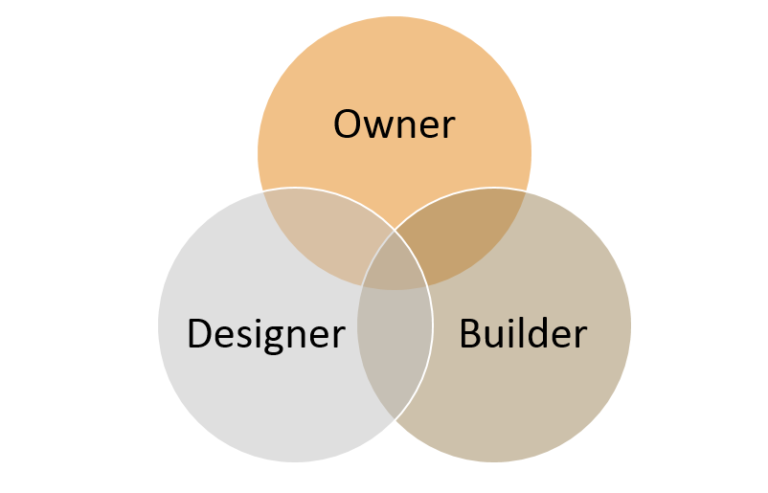
Traditional Design-bid-build Model
How Can You Maximize Value?
TONO Group’s integrated project delivery process removes the obstacles associated with the traditional design-bid-build model and limits conflicting interests. Projects aren’t handed off from the architect to the builder. Delivery isn’t disjointed, and the blame-game between parties is no longer a factor. We—a group of architects, construction managers, developers, interior designers, and real estate professionals—are on the same team. We succeed and fail together. We have every incentive to work together effectively, identifying a client’s need or problem, using our varied expertise to tackle that problem from all angles, limiting cost and risk for all parties involved, and ultimately delivering a meaningful place of lasting value. We like to think of ourselves as stewards, guiding every client through the process and every project towards optimal completion.
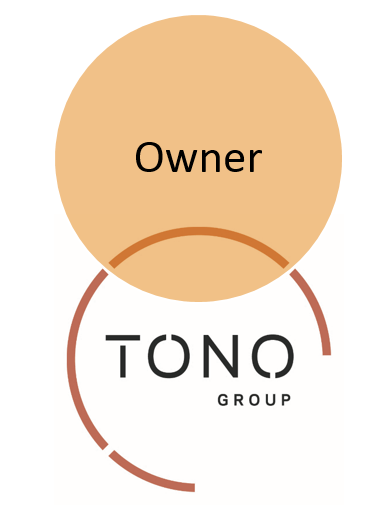
TONO Group’s Design-build Model
If you’re looking to start a project and are interested in maximizing your project’s value, contact us with your ideas.

